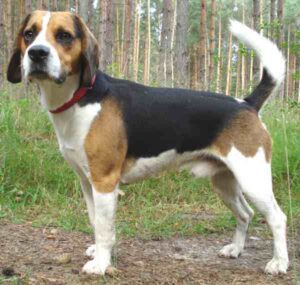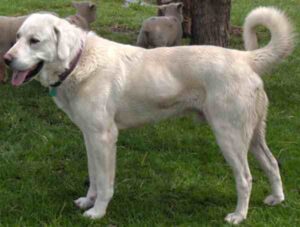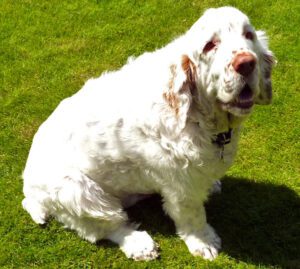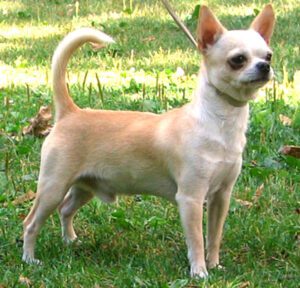The Basenji dog is a breed of hunting dog which was bred from the stock that originated in central Africa. Most of the major kennel clubs in the English-speaking world place the breed in the hound group (more specifically, in the sighthound type).
The Basenji produces an unusual yodel-like sound, due to it’s unusually shaped larynx. The sound is commonly called a ‘baroo‘. This trait also gives the breed the nickname ‘barkless dog‘. The breed is also known by many other names such asAfrican bush dog, African barkless dog, Ango angari, Congo dogandZande dog.
Originating on the continent of Africa, the Basenji-like dogs are depicted in drawings and models dating back to the Twelfth Dynasty of Egypt. Dogs of this type were originally kept for hunting small game by tracking and driving the game into nets.
Europeans first described the type of dog the Basenji breed derives from in 1895-in the Congo. These local dogs, which Europeans identified as a unique breed and calledBasenji, were prized by the locals for their intelligence, courage, speed and silence.
发表的一篇文章叫做“强度”lligence of Dogs by Stanley Coren, PhD questions this. It ranks the breed at #78 out of 79, which is the second to lowest rank in intelligence. Some consider this an unreliable list, as it focuses on only the ability to listen to a first command.
Some consider independent dogs such as Basenjis and Afghan Hounds more intelligent than obedient breeds because of their ability to recognize which actions benefit them, and which simply please another.[1]
Several attempts were made for bringing the breed to England, but the earliest imports succumbed to disease. In 1923, for example, Lady Helen Nutting brought six Basenjis with her from Sudan, but all six died from distemper shots they received in quarantine.
It was not until the 1930s that foundation stock was successfully established in England, and then to the United States by animal importer Henry Trefflich. It is likely that nearly all the Basenjis in the Western world are descended from these few original imports.
The Basenji dog breed was officially accepted into the AKC in the year of 1943. The breed is also registered with the United Kennel Club. The popularity of the Basenji dog breed in the United States, according to the American Kennel Club, has declined over the past decade, with the breed ranked 71st in 1999, decreasing to 84th in 2006, and to 93rd in 2011.
Basenji Dog Characteristics
The Basenji dogs are very beautiful, small and short-haired dogs with erect ears. They have tightly curled tails and graceful necks. Their forehead is wrinkled, even more so when they are young or extremely excited.
The eyes of the Basenji dog are typically almond-shaped. These dogs are a square breed, which means they are as long as they are tall, with males usually larger than the females.
Basenji dogs are athletic dogs, and deceptively powerful for their size. They have a graceful, confident gait like a trotting horse, and skim the ground in a double suspension gallop, with their characteristic curled tail straightened out for greater balance when running at their top speed.
They come in a few different coloration: red, black, tricolor, and brindle, and they all have white feet, chests and tail tips. They can also come in trindle, which is a tricolor with brindle points, a rare combination.
Average height of the mature Basenji dog is between 16 and 17 inches at the withers. And average live body weight of the mature dogs is between 9.5 and 11 kg.
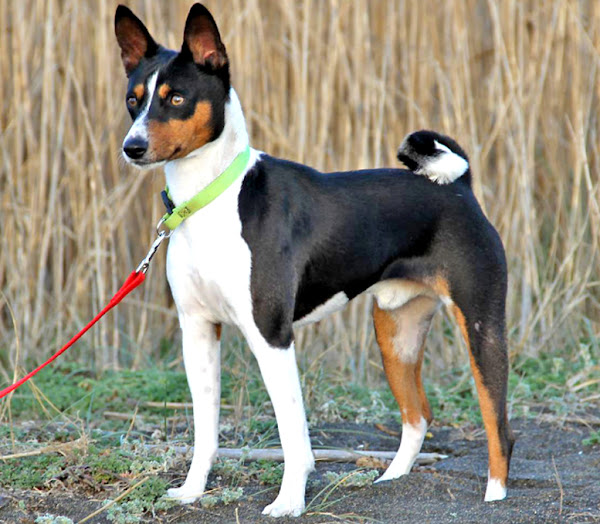
Temperament
The Basenji dogs are alert, energetic, curious and reserved with strangers. They tend to become emotionally attached to a single human. They may not get along with non-canine pets.
They generally dislike wet weather, much like cats, and will often refuse to go outside in any sort of damp conditions.
The Basenji dogs generally like to climb, and can easily scale chain wire/link fences. They often stand on their hind legs, somewhat like a meerkat, by themselves or leaning on something; this behavior is often observed when the dog is curious about something.
巴辛吉狗有强壮的猎物。根据to the book The Intelligence of Dogs, they are the second least trainable dog, when required to do human commands (behind only the Afghan Hound). Their real intelligence manifests, when they are required to actually “think”.
Lifespan
Average lifespan of the Basenji dog is between 12 and 14 years.
Feeding
How much a mature dog eats depends on it’s size, age, build, metabolism and activity level. Dogs are individuals, just like people, and they don’t all need the same amount of food.
The Basenjis are smaller sized dog. So, their diet should be formulated for a smaller-sized breed with average exercise needs. You can consult with avetin your area for better feeding recommendations.
Caring
Taking good care of the dogs is very important for raising Basenji dog. The Basenji is a hunting dog, and it needs daily exercise. Some Basenjis do fine with a daily walk, while others require more enthusiastic forms of exercise. Basenjis raised with children will often spend their time wearing each other out.
Health
The Basenji dogs are generally healthy. But like all otherdog breeds, they are also prone to certain health conditions.
Their common health problems include hip dysplasia, elbow dysplasia, hypothyroidism, and von Willebrand’s disease. Always try to keep good contact with a vet in your area.
| Breed Name | Basenji |
| Other Names | African bush dog, African barkless dog, Ango angari, Barkless Dog, Congo dog and Zande dog |
| Breed Size | Small |
| Height | Between 16 and 17 inches at the withers |
| Weight | Between 9.5 and 11 kg |
| Good as pets | Yes |
| Climate Tolerance | All climates |
| Color | They come in a few different colorations: red, black, tricolor, and brindle, and they all have white feet, chests and tail tips. They can also come in trindle, which is a tricolor with brindle points, a rare combination. |
| Lifespan | Between 12 and 14 years |
| Good for children | Yes |
| Rarity | Common |
| Country of Origin | Democratic Republic of the Congo |
